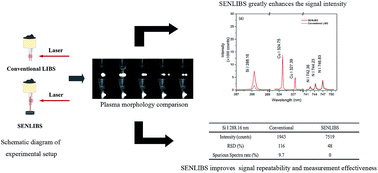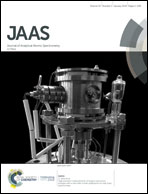Surface-enhanced laser-induced breakdown spectroscopy utilizing metallic target for direct analysis of particle flow
Abstract
In this paper, surface-enhanced laser-induced breakdown spectroscopy (SENLIBS) method utilizing metallic target was proposed to enhance and stabilize plasma for direct analysis of particle flow. A metallic target was installed in the particle flow to provide a target surface, which was expected to fix the laser ablation position and enhance plasma intensity. Comparative experiments were carried out between conventional LIBS and SENLIBS. Results showed that sampling rate was improved by SENLIBS and the metallic target had a lower breakdown threshold than silica particle flow. Plasma images confirmed that plasma morphology was more stable. Based on these changes, the signal intensity was enhanced by more than 3 times for silicon emission line at 288.16 nm. Meanwhile, signal repeatability was greatly improved, with relative standard deviation (RSD) of the pulse-to-pulse signal decreased from 116% to 48%. Further investigation showed that SENLIBS has potential in improving measurement sensitivity, as the signal to noise ratio (SNR) increased from 9.89 to 18.63. Overall, these results demonstrated the feasibility and enhancement effects of SENLIBS.



 Please wait while we load your content...
Please wait while we load your content...